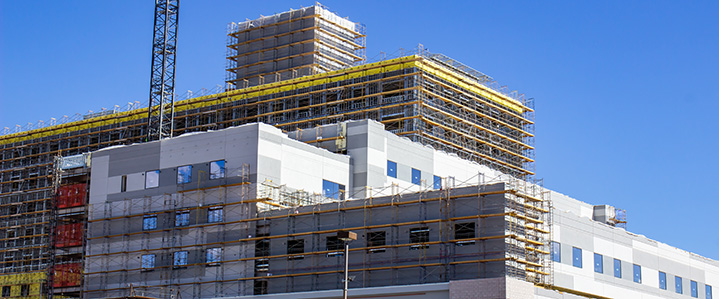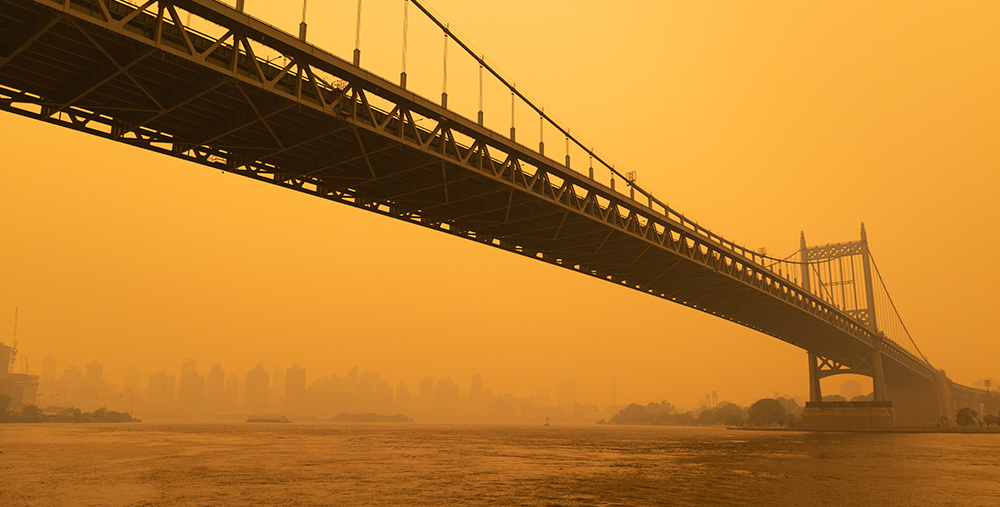4 Ways 24/7 Construction Monitoring Makes Healthcare Facilities Safer

Construction presents significant infection risks to patients within any healthcare facility. Virtually every construction project generates dust that can carry fungal spores into patient areas, if construction areas and air from those areas are not appropriately isolated. This dust can prove deadly to sensitive immunocompromised populations.
While healthcare construction professionals have become adept at the methods to contain contaminants within these sites, 24/7 construction monitoring provides invaluable peace of mind, given that even small lapses in containment could impact adjacent sensitive patient populations. It is an invaluable assurance that, should one element break down, the construction team will be alerted immediately to take quick action. This enables construction teams to address potential issues before they become major problems.
Watch our video on 24/7 Air Quality Monitoring
Construction dust remains an elevated risk
Some studies show that more than half of the healthcare associated infections (HAIs) related to Aspergillus, a common mold, are caused by construction activities in hospitals. One study identified 31 cases of HAIs due to mold during a ten-month construction period at a large medical center. A separate review of fungal outbreaks that occurred during hospital construction and renovation activities found overall mortality associated with these fungal infections was approximately 50%.
In order to reduce this risk, the American Society of Healthcare Engineers (ASHE) released an update to its Infection Control Risk Assessment (ICRA) in 2022. The ICRA 2.0 toolkit provides an updated four-step process that facilities professionals can use to mitigate infection risk during construction in healthcare facilities. Among other steps, ASHE now recommends that healthcare facilities perform dust monitoring for all higher risk ICRA Class projects (e.g., Class III, IV projects).
This added step provides tremendous safety advantages, but it can be complex to implement. While many healthcare facilities professionals have become adept at monitoring pressurization, dust monitoring carries unique nuances. Because dust is ubiquitous, it takes expert knowledge to establish a baseline measurement and set up sensors with the right level of sensitivity to identify potential risks without triggering constant unwarranted alarms. When done right, however, 24/7 dust monitoring can deliver immediate, vital project information to the construction team and hospital stakeholders when action is required to prevent exposure.
How healthcare facilities are using 24/7 construction monitoring
EH&E’s automated 24/7 construction air quality monitoring system involves four components: remote monitors, a data interpretation algorithm, an alerting system, and a web-based dashboard. Together, these components eliminate a great deal of the manual labor involved in collecting, processing, and interpreting data.
Continuous site monitoring can provide benefits for projects of all types. Below, we highlight several examples of how hospitals are benefiting from 24/7 dust monitoring.
1. Peace of mind for construction in critical areas
A hospital had slated 16 weeks for the renovation of two operating rooms. With construction occurring within an active OR department, the construction team knew effective containment was essential. While construction was not occurring around the clock, 24/7 dust monitoring provided the hospital team with added assurance that their sensitive patients would be safe throughout the course of construction.
2. Ensure community safety
A hospital with a neighboring large building being demolishing was rightfully concerned about the risk of spreading dust and infection to oncology and transplant patients within their facility. The hospital approached EH&E to see if we could provide interim support until they could hire a full-time industrial hygienist (IH) to support them with dust monitoring due to these concerns. However, after a risk assessment, we proposed 24/7 remote dust monitoring, and the hospital is able to utilize the remote monitoring with “as needed” consulting support from EH&E rather than hire an internal IH. For hospital areas potentially impacted by the construction, 24/7 construction monitoring for airborne dust, pressurization, and vibration will be performed during the 30-month project, which is a more robust and protective solution and at no more cost than hiring an internal, qualified IH. And that does not even include the cost of IH equipment for a multiyear project, an added expense that would be borne by the hospital.
3. Prevent construction delays
When this Northeast hospital began renovating its atrium, they performed pressurization monitoring on the first floor. However, an adjacent negative pressure space created a pathway through which construction dust was able to move to a second-floor chemotherapy pharmacy. While the team worked to uncover the problem, the construction project was shut down for several weeks, leading to significant schedule delays and cost overruns. Of even greater concern for the hospital was that construction dust was directly impacting a compounding pharmacy that was preparing cancer drugs. Once the issue was addressed, the construction team put 24/7 dust monitoring in place. With that stopgap, later issues were all investigated and addressed within minutes to hours after being alerted.
4. Help Identify causes not related to construction
Performing pressurization and dust monitoring together can also tell construction teams when a dust issue is not likely caused by construction, but due to other activities that occur in a hospital. This can prove valuable in pinpointing potential issues beyond construction activities. For example, healthcare facilities in areas impacted by wildfires may notice unusually high levels of dust particulates in patient areas even when pressurization data indicates construction is contained. This can lead to investigations that may identify broader filtration-related issues. It can also identify transient elevated dust levels that may be due to routine (non-construction) cleaning activities.
The availability of continuous data on a visual dashboard also makes it easier to identify the cause of spikes in dust levels. For example, taking a sample of airborne dust during a morning walkthrough might demonstrate unusually high levels of contaminants. This could prompt a range of activities to determine the problem on the construction site. Continuous construction monitoring, on the other hand, can provide perspective as to the cause of the high levels. Maybe the high level of dust is part of a 20-minute peak that begins prior to the day’s construction activities. This more clearly indicates that there’s a specific activity – such as nearby cleaning – that may be elevating dust levels for a short duration.
Let’s eliminate construction-related HAIs
The need for modern, up-to-date healthcare facilities with capacity to care for their populations makes healthcare facility construction an ongoing process. Yet every healthcare construction project, regardless of its scale, carries potential risks to patients. While ASHE’s updated guidance makes 24/7 construction monitoring a must for certain healthcare projects, there may be instances outside of these recommendations that may benefit from continuous monitoring.
For expert guidance on when to implement 24/7 construction monitoring for dust control in healthcare, contact EH&E.
Subscribe
to our blog
"*" indicates required fields




